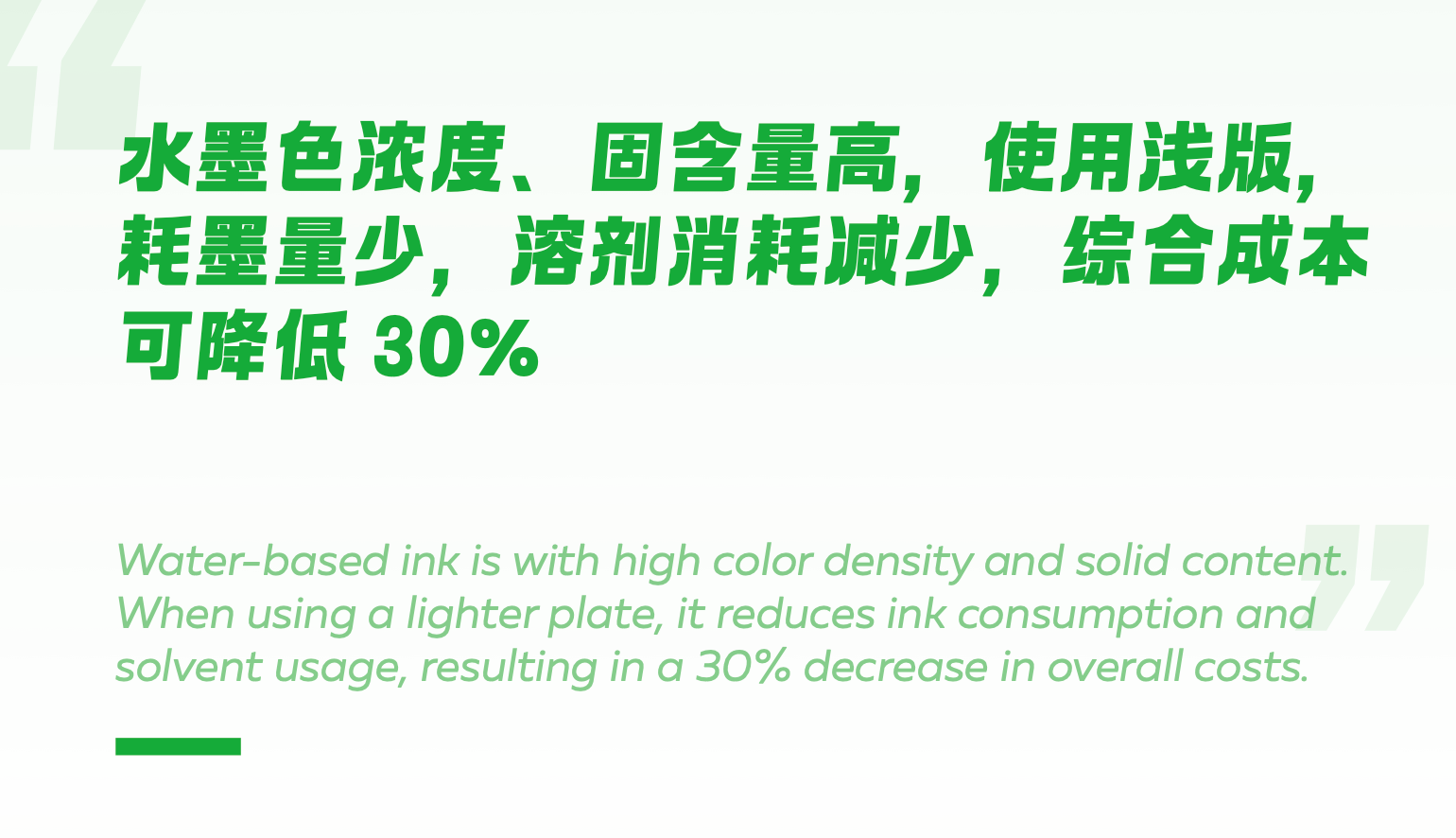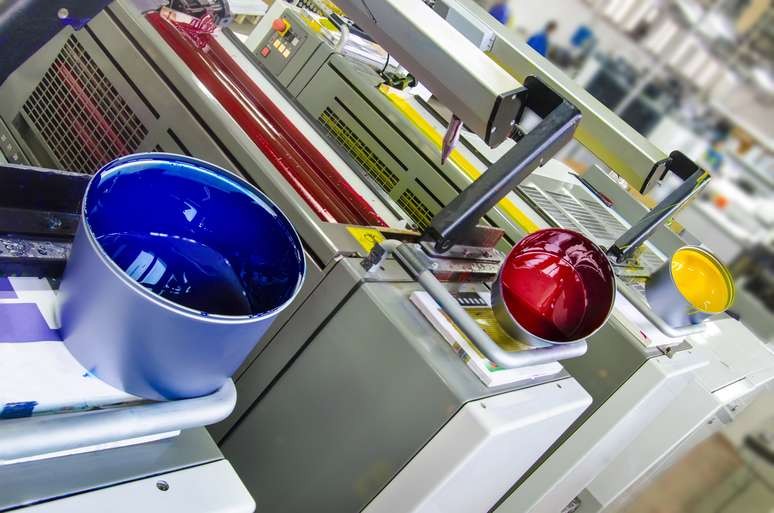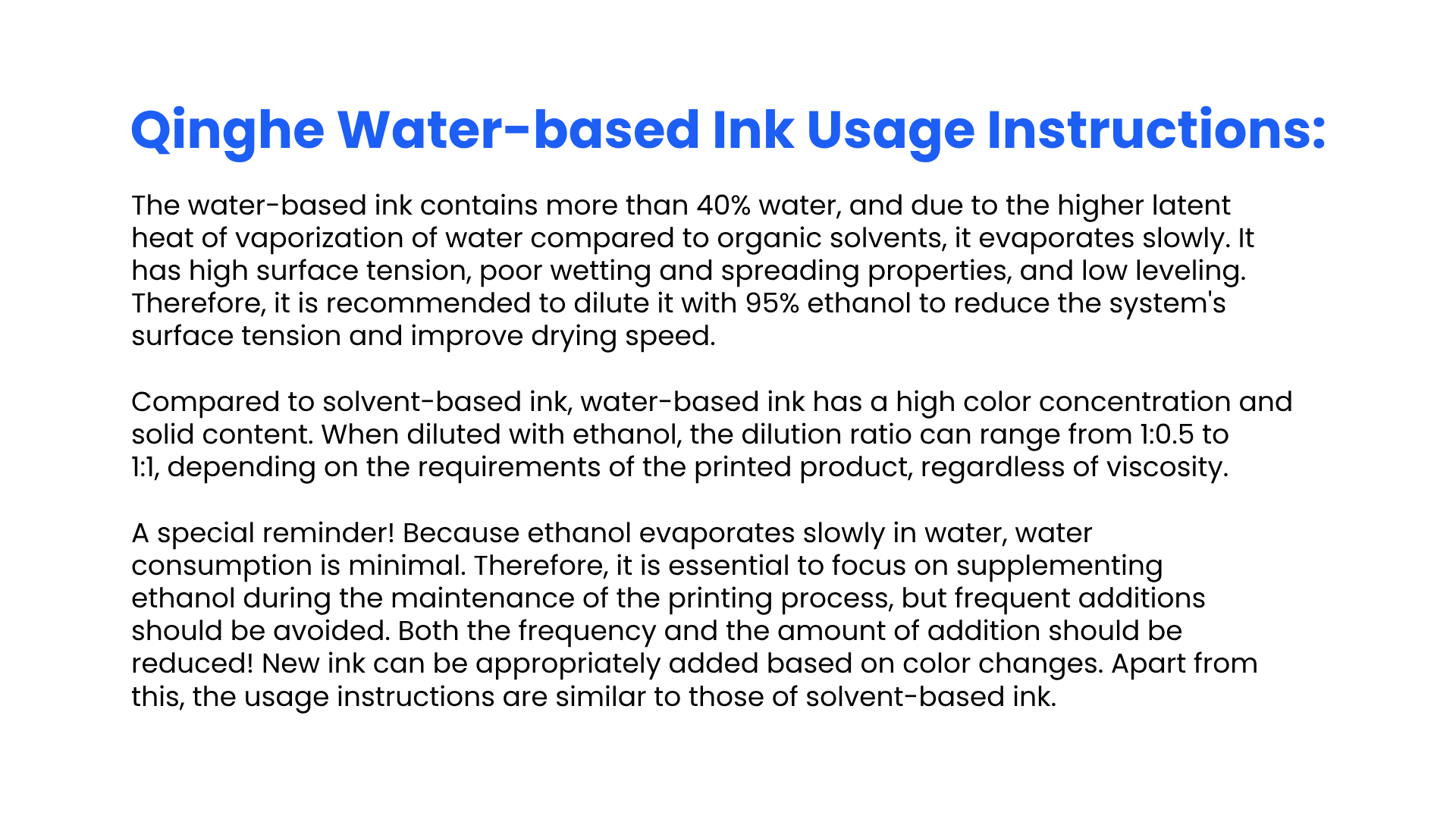Introduction

In the competitive printing world, understanding the nuances of flexographic inks is crucial for success. Flexographic inks are specially formulated for flexographic printing, offering vibrant colors and high-quality results. As a key player in the printing industry, it's essential to consider suitable flexo ink suppliers who can provide top-notch products and reliable service. In this introduction, we'll explore the advantages of UV inks for flexo printing and delve into the innovative world of water-based ink.
Understanding Flexographic Inks
Flexographic inks are explicitly designed for flexographic printing, a popular method known for its efficiency and versatility. These inks are formulated to adhere to various substrates, making them ideal for packaging materials, labels, and other printed products. With their fast-drying properties and vibrant color options, flexographic inks are a go-to choice for many printers looking to deliver high-quality results.
The Importance of Flexographic Printing
Flexographic printing is a versatile and efficient process used across numerous industries. Here's why high-quality flexographic ink is essential:
- Durability and Integrity: Flexographic inks are formulated to ensure the longevity of printed materials, resisting fading, smudging, and other forms of degradation. This is especially important for food packaging, pharmaceuticals, and retail products.
- Vibrant Colors: High-quality inks deliver exceptional color accuracy and vibrancy, creating visually appealing packaging and graphics that can enhance brand recognition and product appeal.
- Substrate Compatibility: The suitable inks adhere effectively to various substrates commonly used in flexographic printing, such as paper, plastic films, and foils.
- Printing Performance: Formulated for optimal printing performance, these inks ensure consistent ink flow, minimize waste, and produce sharp, high-quality images.
Investing in high-quality flexographic inks is crucial for achieving durable, visually appealing, high-performance printed materials across various industries.
Key Considerations for Flexo Ink Suppliers
When choosing a supplier for your flexo ink needs, consider factors such as product quality, reliability, and customer service. A reputable supplier will offer various options, including UV inks for flexo printing and water-based ink solutions tailored to your requirements.
The Advantages of UV Inks for Flexo Printing
UV inks are a popular choice for printing due to their unique curing process. Here's why:
- Instant Curing: UV inks solidify almost instantly upon exposure to ultraviolet light, significantly reducing drying times compared to traditional methods.
- Faster Production Speeds: The rapid curing process allows for faster printing speeds and turnaround times for printed materials.
- Reduced Energy Consumption: UV curing doesn't rely on heat or extensive drying processes, so it consumes less energy, making it a more sustainable option.
- Durable and Scratch-Resistant: UV-cured inks are known for their exceptional durability and resistance to scratches, fading, and chemicals.
- Wider Range of Substrates: UV inks can adhere to more materials than traditional ones, offering greater printing versatility.
UV inks offer a combination of speed, efficiency, and durability, making them a valuable asset for various printing applications.
Exploring Water-Based Ink for Flexo Printing
Water-based inks are gaining popularity due to their eco-friendly nature. They emit low volatile organic compound (VOC) emissions, making them an environmentally responsible choice.
Water-based inks have become popular for flexo printing as the demand for sustainable and environmentally friendly products grows. These inks produce vibrant and high-quality prints and contribute to reducing VOC emissions, making them an eco-conscious option for businesses. With technological advancements, water-based inks offer improved adhesion and drying capabilities, making them a viable alternative to traditional solvent-based inks.
The Evolution of Flexographic Inks

The History of Flexographic Inks
Flexographic inks have a rich history dating back to the 19th century when they were first used for simple packaging printing. Over time, advancements in technology and materials have led to the development of more sophisticated flexographic inks that offer superior print quality and durability.
Flexographic inks have come a long way since their humble beginnings in the 19th century. With new technologies and materials, flexographic inks have evolved to offer enhanced color vibrancy, faster drying times, and improved adhesion to various substrates. These advancements have made flexographic printing popular for various applications, from flexible packaging to labels and corrugated boxes.
Innovations in Flexographic Printing Ink
In recent years, significant innovations have occurred in flexographic printing ink, driven by the demand for higher-quality and more sustainable printing solutions. These innovations include the development of UV inks for flexo printing, which offer faster curing times and improved resistance to abrasion and chemicals.
In addition to UV inks, water-based flexographic inks have also emerged as a sustainable alternative to traditional solvent-based inks. These inks are formulated with water as the primary solvent, reducing volatile organic compound (VOC) emissions and making them more environmentally friendly. Water-based flexo inks also offer excellent printability and adhesion on a wide range of substrates, making them versatile for packaging and label printing.
The Role of Qinghe Chemical in Flexographic Ink Manufacturing
Qinghe Chemical has been at the forefront of flexographic ink manufacturing, consistently pushing the boundaries of what is possible with these specialized inks. With a focus on research and development, Qinghe Chemical has introduced cutting-edge water-based ink for flexo printing that delivers vibrant colors while minimizing environmental impact.
Types of Flexographic Inks

Water-Based Flexographic Inks
Regarding eco-friendly printing, water-based flexographic inks are the go-to choice. These inks are made from natural ingredients and offer low volatile organic compound (VOC) emissions, making them a sustainable packaging and label printing option. Water-based inks also provide excellent color vibrancy and adhesion to various substrates, making them versatile for flexo printing applications.
Water-based flexographic inks are not only environmentally friendly but also offer superior print quality. Their vibrant colors and excellent adhesion to different substrates make them a top choice for brands looking to make their packaging stand out on the shelves. Additionally, these inks are easy to clean up and maintain, reducing the overall environmental impact of the printing process.
Solvent-Based
Flexo Printing Ink
Solvent-based flexo printing ink has been a popular choice for many years due to its fast drying time and ability to adhere to a wide range of substrates. While solvent-based inks offer excellent print quality and durability, they do emit higher levels of VOCs compared to water-based inks. As environmental regulations become more stringent, many printers are transitioning to more sustainable ink options.
As environmental awareness grows, the demand for UV flexo inks has increased. These inks are known for their high-quality printing and ability to cure instantly under UV light, resulting in reduced energy consumption and emissions. Additionally, UV flexo inks are free from VOCs, making them a more environmentally friendly option compared to solvent-based inks. This shift towards UV flexo inks demonstrates the industry's commitment to sustainability and innovation.
UV Flexo Inks for
High-Quality Printing
UV flexo inks have revolutionized the world of flexographic printing by instantly curing under ultraviolet light. This results in high-quality, durable prints with vibrant colors and sharp details. UV flexo inks also offer excellent adhesion to non-porous substrates, making them ideal for food packaging and other specialty applications where print durability is crucial.
Now that we've explored the different types of flexographic inks available on the market, let's explore the advantages each type offers for various printing applications.
Advantages of Flexographic Inks
Cost Efficiency of Flexographic Inks
Flexographic inks offer a cost-efficient solution for printing needs, requiring less ink to produce high-quality prints. This makes them a popular choice for businesses looking to reduce printing costs while maintaining excellent print quality. With the right flexo ink suppliers, companies can save significantly without compromising the final product.
Environmental Benefits of
Water-Based Flexo Printing Ink
One key advantage of water-based ink for flexo printing is its environmental friendliness. Compared to solvent-based inks, water-based flexographic inks produce fewer volatile organic compounds (VOCs) and are easier to clean up, reducing the environmental impact of the printing process. This makes them an ideal choice for businesses adopting sustainable printing practices.
Enhanced Print Quality with UV Flexo Printing Ink
UV flexo inks offer enhanced print quality, including vibrant colors, sharp images, and excellent adhesion to various substrates. UV inks for flexo printing also allow for faster curing times, resulting in increased productivity and reduced downtime. This makes UV flexographic inks a valuable choice for businesses seeking high-quality prints with quick turnaround times.
Choosing the Right Flexographic Inks

When selecting flexographic inks for your printing needs, consider factors such as color consistency, adhesion, and drying time. Different substrates and printing conditions may require specific ink properties to achieve optimal results. It is crucial to work with a knowledgeable flexo ink supplier who can guide you in choosing the right ink for your specific requirements.
Factors to Consider When Selecting Flexo Inks
Choosing the suitable flexographic ink is crucial for achieving optimal print results. Here are some key factors to consider:
- Substrate Type: Different materials have varying absorption properties. Water-based inks work well for porous substrates like paperboard, while solvent-based inks adhere better to non-porous surfaces like plastic films.
- Printing Speed: The drying time of the ink needs to match your printing speed. UV inks cure almost instantly, making them ideal for high-speed presses. Oil-based inks dry slower and are better suited for slower printing processes.
- Desired Print Quality: Solvent-based inks often excel for vibrant colors and high-resolution images. Water-based inks can also offer good quality but may require multiple passes for solid colors.
Consulting with a knowledgeable ink supplier is vital. They can help you select the perfect ink formulation based on your specific project requirements and ensure compatibility with your printing equipment. By considering these factors and partnering with an experienced supplier, you can achieve superior print quality and efficient production with flexographic printing.
Meeting Regulatory Requirements with Flexographic Inks
Regulatory compliance is a key consideration when choosing flexographic inks, especially for food packaging and other sensitive applications. Ensure that the inks you select meet relevant safety standards and regulations to avoid potential issues down the line. Reliable flexo ink suppliers will have the necessary certifications and documentation to guarantee compliance.
Working with Reliable Flexo Ink Suppliers
The relationship between printers and flexo ink suppliers is crucial for achieving consistent print quality and meeting production deadlines. Look for a supplier with a proven track record of reliability, on-time delivery, and technical support. A reliable supplier will also stay updated on industry trends and innovations, providing you with the latest advancements in flexographic ink technology.
Building a solid partnership with your flexo ink supplier can also lead to cost savings and improved efficiency. By working closely with your supplier, you can identify opportunities for process improvements, waste reduction, and better inventory management. This collaboration can result in a more streamlined production process and ultimately contribute to your bottom line.
Best Practices for Working with Flexographic Inks

Storage and Handling of Flexo Printing Ink
Keeping flexographic inks in a cool, dry place away from direct sunlight is crucial to maintaining their quality when storing and handling flexographic inks. Properly sealing the containers and rotating stock regularly can prevent ink from drying out or becoming contaminated. Safety guidelines for handling chemicals must also be followed to ensure a safe working environment.
Maintaining Print Consistency with Flexographic Inks
To achieve consistent print quality with flexographic inks, regular maintenance on printing equipment and monitoring of ink viscosity are essential. Adjusting ink settings based on substrate and environmental conditions can also help maintain color accuracy and print consistency. By closely monitoring these factors, you can ensure high-quality results with every print run.
Troubleshooting Common Issues with Flexo Inks
When encountering common issues like poor adhesion or uneven coverage with flexographic inks, it's essential to identify the root cause by checking plate condition, ink viscosity, and substrate compatibility. Adjusting these variables can help troubleshoot and resolve printing issues effectively. Additionally, collaborating closely with experienced flexo ink suppliers can provide valuable insights and support for troubleshooting challenges.
The Future of Flexographic Inks

In conclusion, using flexographic inks has revolutionized the printing industry, offering cost-effective and environmentally friendly solutions for high-quality printing. Embracing sustainable printing practices with Qinghe Chemical ensures that your printing processes are aligned with eco-friendly initiatives. The future of flexographic inks looks promising, with continuous innovations and advancements in ink manufacturing technology. Choosing the right flexo ink suppliers for your printing needs is crucial to ensure consistent quality and reliability in your printing operations.
Embracing Sustainable Printing Practices with Qinghe Chemical
Qinghe Chemical is at the forefront of promoting sustainable printing practices through its range of eco-friendly flexographic inks. Utilizing their water-based ink for flexo printing can significantly reduce your environmental impact while maintaining exceptional print quality. With a focus on innovation and sustainability, Qinghe Chemical is committed to providing cutting-edge solutions for the modern printing industry.
The future of flexographic inks is bright, with ongoing research and development leading to breakthroughs in ink manufacturing. As technology advances, we expect to see even more efficient and environmentally friendly options for flexo printing ink. UV inks for flexo printing are already a game-changer, offering enhanced print quality and faster curing times, paving the way for a more sustainable future.
Choosing the Right Flexo Ink Suppliers for Your Printing Needs
When selecting flexo ink suppliers, it's essential to partner with a company that prioritizes quality, reliability, and sustainability. Look for suppliers that offer a diverse range of flexographic inks, including water-based ink for flexo printing and UV inks for high-quality results. By working closely with reputable suppliers like Qinghe Chemical, you can ensure that your specific printing requirements are met while contributing to a greener environment.

